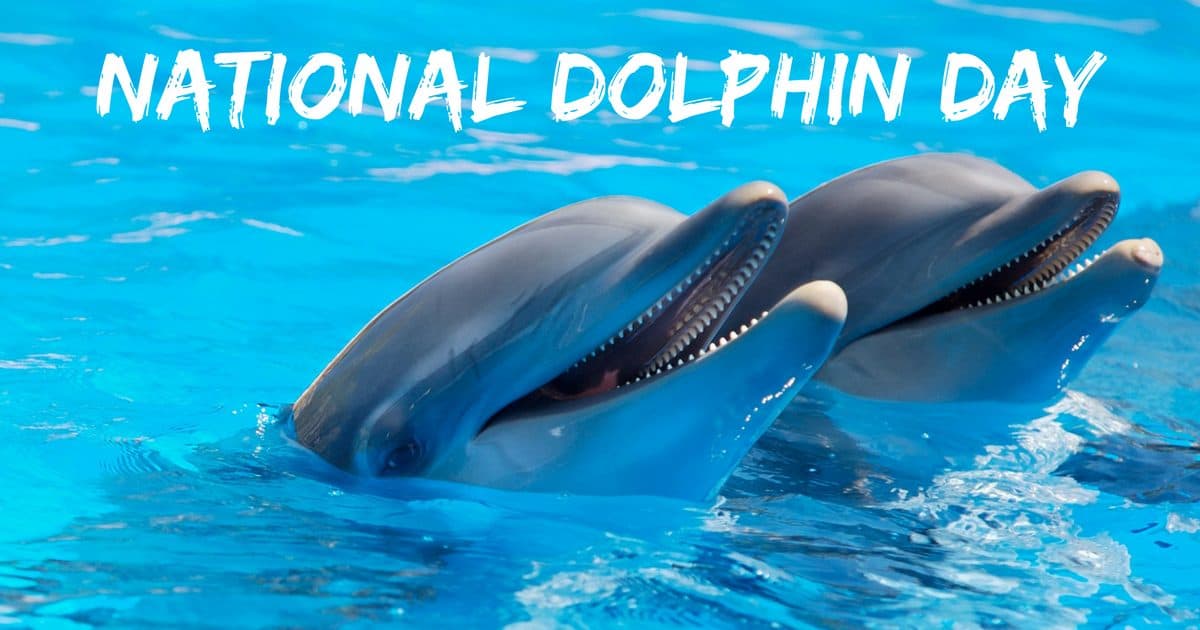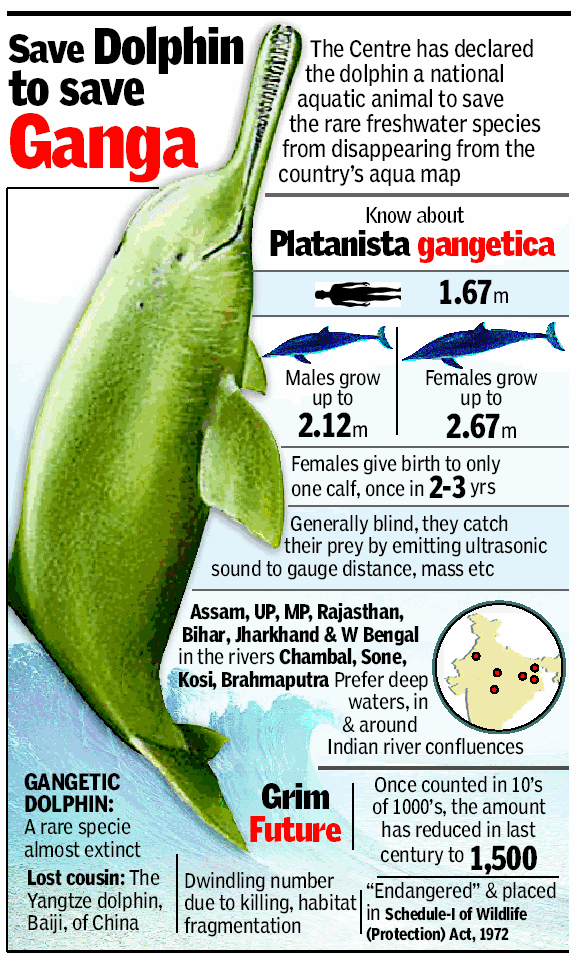Description

Copyright infringement is not intended
Context: The Union Environment Ministry has designated October 5 as National Dolphin Day, to be observed annually starting this year.
More about news:
- The decision to designate a National Dolphin Day was taken by the standing committee of the National Board for Wildlife (NBWL).
- Purpose:
- generating awareness and community participation for the conservation of dolphins including the Gangetic Dolphin.
- will focus on improving the flow and water quality in Ganga and its tributaries to the survival of the Gangetic dolphin.
National Board for Wildlife
- It is constituted by the Central Government under Section 5 A of the Wildlife (Protection) Act, 1972 (WLPA).
- The National Board may, at its discretion, constitute a Standing Committee under sub-section (1) of Section 5B.
- The Standing Committee shall consist of the Vice-Chairperson (Union Minister in charge of Forests and Wildlife) the Member Secretary and not more than ten members to be nominated by the Vice-Chairperson from amongst the members of the National Board.
About South Asian river dolphin (Platanista gangetica)
- It is an endangered freshwater or river dolphin found in the region of Indian subcontinent, which is split into two subspecies,
- the Ganges river dolphin and the Indus river dolphin
- Ganges river dolphin is primarily found in the Ganges and Brahmaputra Rivers and their tributaries in India, Bangladesh, and Nepal.
- Indus river dolphin is found only in the main channel of the Indus River in Pakistan and in the River Beas (a tributary of the Indus) in Punjab in India.


- The Ganges river dolphin has been recognized by the government of India as its National Aquatic Animal and is the official animal of the Indian city of Guwahati.
- The Indus river dolphin has been named as the National Mammal of Pakistan.
Synonyms
- Ganges subspecies: Gangetic dolphin, Ganges susu, shushuk (Being a mammal, the Ganges river dolphin cannot breathe in the water and must surface every 30–120 seconds. Because of the sound it produces when breathing, the animal is popularly referred to as the susu.
- Indus subspecies: bhulan, Indus dolphin, Indus blind dolphin
Distribution and habitat:
- The South Asian river dolphins are native to the freshwater river systems located in Nepal, India, Bangladesh, and Pakistan.
Ecological importance:
- The Gangetic dolphin is an indicator species, whose status provides information on the overall condition of the ecosystem and of other species in that ecosystem, for the Ganga ecosystem and is extremely vulnerable to changes in water quality and flow.
Conservation:
- International trade is prohibited by the listing of the South Asian river dolphin on Appendix I of the Convention on International Trade in Endangered Species.
- It is protected under the Indian Wildlife Act.
- Both subspecies are listed by the IUCN as endangered on their Red List of Threatened Species.
- The species is listed on Appendix I and Appendix II of the Convention on the Conservation of Migratory Species of Wild Animals.
- The Ministry of Environment and Forest declared the Gangetic dolphin the national aquatic animal of India.
- Dolphin Awareness Program (Phase - I) has been completed. Further strengthening of networking is being taken up in Phase- II with NGOs, schools and teachers in Ganga and Brahmaputra river basins.
- A stretch of the Ganges River between Sultanganj and Kahlgaon in Bihar has been declared a dolphin sanctuary and named Vikramshila Gangetic Dolphin Sanctuary, the first such protected area.
- National Mission for Clean Ganga (NMCG) in its efforts of biodiversity conservation in Ganga River basin has been working further on the Ganges River Dolphin Conservation Action Plan and has taken up steps to coordinate with various institutions to:
- build capacity for Ganga River Dolphin Conservation and Management;
- minimize fisheries interface and incidental capture of Ganga River Dolphins;
- restore river dolphin habitats by minimizing and mitigating the impacts of developmental projects;
- involve communities and stakeholders for sustainable efforts in Ganga River Dolphin conservation;
- educate and create awareness and set off targeted research.
Major Threats
- Habitat loss /Degradation / Disturbances – Annual flood, Changing River course.
- Inland waterways / Movement of large cargo vessels.
- Various anthropogenic / religious activities.
- Excessive harvesting/hunting/food – subsistence use/ local trade.
- Directed killing/ poaching or Accidental killing – by catch/ fisheries related entanglements.
- Water pollution – Agriculture related or direct disposal of sewage – on both the banks of River/chemical.
The Irrawaddy dolphin (Orcaella brevirostris)
- It is a euryhaline species of oceanic dolphin found in discontinuous subpopulations near sea coasts and in estuaries and rivers in parts of the Bay of Bengal and Southeast Asia.


- Although it is called the Irrawaddy river dolphin, it is not a true river dolphin, but an oceanic dolphin that lives in brackish water near coasts, river mouths, and estuaries.
- The Chilika Lake in Odisha has emerged as the “single largest habitat of Irrawaddy dolphins in the world”, following a fresh monitoring survey that pegs the number of individuals of the endangered species at 155.
- Irrawaddy dolphins are classified as ‘Endangered’ in the IUCN Red List of Threatened Species.
Project Dolphin
- It aims at the conservation and protection of the Dolphins in rivers and oceans of the country.
- It involves conservation of Dolphins and the aquatic habitat through the use of modern technology—specially in enumeration and anti-poaching activities.
- It will engage the fishermen and other rivers and ocean dependent population and will strive for improving the livelihood of the local communities.
- It will help in the mitigation of pollution in rivers and the oceans.
- It will give a boost to biodiversity, create employment opportunities and act as a centre of attraction for tourism.

https://www.pib.gov.in/PressReleasePage.aspx?PRID=1809800
















